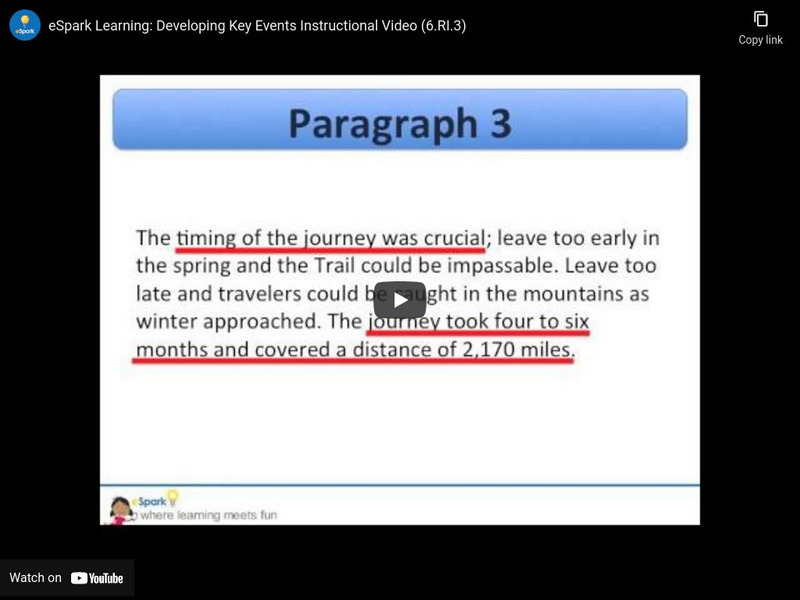Curated Video
Structuring Narrative Writing with Transitions
In this video, the teacher guides students on how to structure their narrative writing with a clear sequence of events and ideas. They explain the importance of using transitional words and phrases to signal the movement from one event...
SciShow
Why Do So Many People Believe in Conspiracy Theories?
The internet is full of all sorts of wild claims about shadow governments, lizard people, and the shape of the earth. How can these stories inspire tin foil hats despite hard evidence against them?
Lesson Planet
EdTech Tuesday: FriendStrip Kids Pro
Comics in the classroom? Of course! You can watch this quick video for an overview of the FriendStrip Kids Pro app and ideas for use in the classroom. Jennifer and Rich will take you step-by-step through how to edit a comic strip and how...
Camelea Publishing
Camelea: Like the Elephants
Camelea loves the ocean air, breeze and beautiful things she sees on the beach. Her brother and mother both want her to swim in the ocean, but she doesn't want to get water in her nose. Follow along with the story to see how Camelea...
TED-Ed
Is DNA the Future of Data Storage?
When you think of secret messages and data storage, DNA doesn't normally come to mind. Viewers watch a video that explains how scientists use DNA to store information. It describes some recent advances in the area.
TED-Ed
How the Sandwich Was Invented
Sandwich: a delicious meal stacked with meats, cheeses, and veggies, or a parish in England? How about both! The sandwich was invented in—yes, you got it—Sandwich, by John Montagu. Watch this creative and inventive video that gives a...
Crash Course
War & Expansion
How did the United States come to acquire two of its largest states? Your class members will learn about the sequence of events that led to and immediately followed the acquisition of Texas and California, including the Mexican-American...
Flocabulary
The 5 Types of Text Structure
Developing an informational text is like designing a building—if the structure is weak, it will not stand. A language arts video provides an overview of the five types of text structure. A catchy song and specific examples help give a...
TED-Ed
How Do Tornadoes Form?
Take your students on a storm chasing adventure from the safety of the classroom with this short video on tornadoes. From powerful thunderstorms to swirling twisters, this resource explains the necessary conditions and process...
Imagine Learning Classroom
Learn Zillion: Organize Ideas Chronologically for a Narrative
In this lesson, you will learn how to tell your story step-by-step by getting the memory in your head and thinking "What happened first, then next, then next." [4:43]
Imagine Learning Classroom
Learn Zillion: Organize Ideas Chronologically for a Narrative
In this lesson, you will learn how to tell your story step-by-step by getting the memory in your head and thinking "What happened first, then next, then next." [5:17]
eSpark Learning
E Spark Learning: Developing Key Events Instructional Video (6.Ri.3)
In this video, students are guided through an analysis of a piece of informational text about travelers on the Oregon Trail. The instructor shows how to use a graphic organizer to sequence the events and see how the main event, westward...
Other
Youtube: Timelines With Baby Dragon
Baby Dragon helps some third graders by showing them his timeline project. The timeline project encourages kids to do "timeline math". It shows sequence and important events and ideas. [11:57]











